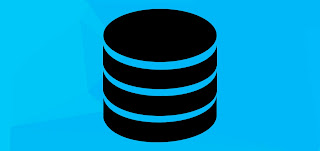Introduction -Word "data" means small units of information.it can be texts, images, media, numbers etc. We can store data manually on a piece of paper or in electronic memory. For manage the data, We need database. Database organize our data in a systematic manner.
What is data?
Data is a collection of facts, such as numbers, words or it can be bytes or bits inside the memory of electronic devices (for example-mobile, laptop or any other electronic devices).
What is database?
A database is a systematic collection (organized collection) of data ,so database can easily accessed and managed. In computer language a database refers to a software used to store and organize data. You can arrange data into tables, rows, columns, and index. To make it trouble-free to find appropriate (relevant) information. Database store, the motive of ever database to store text, pictures, even media file, so database store are very important.
Types of databases
There are many types of databases are
- Relational database - Relational data base management system comes in light on 1970s.In relational database the data is stored in the form of table. the data is stored in row and columns. SQL( Structured Query Language) is the most common language to perform operations on relational database management system. operations like creating, deleting, updating the data stored in tables of relational database. But the Organizations that have large amount of unstructured data should not be considering a relational database.
- NoSQL database - like the name states that NoSQL means any database doesn't used Structured Query Language as its primary data access language. These kind of database are very beneficial for the organization who have large amount of unstructured data or semi-structured data. Every so often these types of databases are also mention as non-relational database because the Structured Query Language is not used.
- Cloud database - Cloud database are those database which are particularly designed to run in the clouds. Like we are using a lot of cloud based applications. Cloud databases provide flexibility and scalability ,along with high availability to the users.one of the major advantage of cloud database is often low-maintenance.
- Object-oriented database - An object Oriented database is originate because of object oriented programming. In object-oriented database, data and all of its attribute are bind (tie up) together and treated as an object. These databases work efficiently with object-oriented programming languages, like C++ and Java. Like relational databases, object-oriented databases support the ACID properties.
- Hierarchical database - Hierarchical database is look like a family tree because it use parent-child model to store data. Hierarchical database is developed in the early 1960s.hierarchical databases are all the time used to support high-performance and high availability applications.
- Graph database - Graph databases are comes under the NoSQL database and graph database are based on graph theory .Graph-Oriented Database Management Systems (DBMS) software is designed to recognize and work with the relation between data points. Therefore graph databases are frequently used to analyze the relationships between heterogeneous data points, to avoid fraud or for mining data about customers from social media. Data warehousing makes data mining possible.
Database system applications
Database is a connection of interrelated data . Database are widely used, database form an essential part of every enterprise today, storing not only types of information that are common to most enterprises, but also information that is specific to the category of the enterprise. Use of databases grew in all enterprises.
- Sales-Database system applications are used for the information of customer, purchase and product.
- Accounting-For payments, receipts, account balances and other accounting information.
- Human resources-For information about employees, salaries and other related information.
- Manufacturing-For management of the supply food chain and for tracking production of items in factories and order for items.
- For student information, course registrations and grades etc.
- Banking-For customer's information, accounts, customer's loan and banking transactions.
- Finance-For storing information about holdings, sales such as stocks and bonds, also for storing real-time market data to enable online trading by customers.
- For reservations and schedule information.
- For keeping records of calls made, generating monthly bills, maintaining balances on prepaid calling cards, and storing information about the communication networks.
Purpose of database
Database systems come to light in response to early methods of computerized management of commercial data. As an example of such methods, typical of the 1960s.
Database management system follows the rule of normalization .Data redundancy is a state that occurs when the same bit(piece) of data exists in multiple places in the database, whereas data inconsistency is a state that occurs when the various copies of the data in database no longer agree.
The point here is that conventional file-processing environments do not allow needed data to be retrieved in a appropriate and well organized manner.
data are separate in various files, and files may be in different formats, writing new application programs to retrieve the desirable data is difficult.
A computer system, like any other device, is subject to failure. In many applications, It's very crucial that, if a collapse occurs, the data be bring back to the consistent state that existed earlier to the failure.
Conclusion
Database is a collection of interrelated data and set of data to access those programs. database system-applications are used widely now days every enterprise used database as per the requirement of the enterprise. purpose of database systems is to access the data effortlessly, without any redundancy and inconsistency and most important security.

